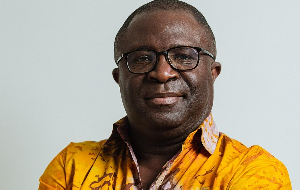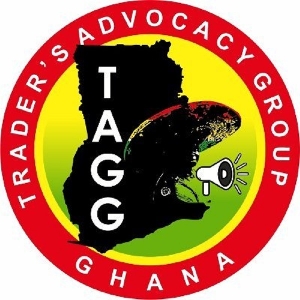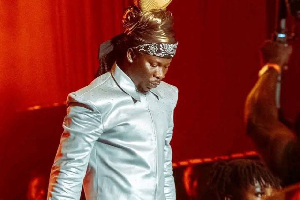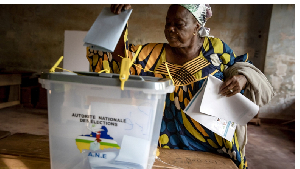Shaping Ghana's future with a 40-year development plan: What happened to the " Budget 2057" Development Framework?
Introduction: Is the 40-year development plan an old wine in a new bottle?
On 4 August 2015, President Mahama is expected to launch a process that will see the preparation of a 40-year development plan that will bind governments to a vision lasting till the country turns 100 years as an independent nation—in 2057. The move, which has been described by the National Development Planning Commission (NDPC) as ambitious, is expected to result in deep and broad consultations for at least a year. According to Dr. Nii Moi Thompson, who heads the NDPC, the end product of the process will be a document setting out dream (MDG-like) goals of which the actual strategy for implementation would be left to successive governments to fashion out.
This is really a great news which has to be supported to provide a direction for the future of the country. But the launch of the process of the 40-year plan also raises important questions which have so far received very little attention. This has to do with its connection with the Ghana "Budget 2057" Development Framework which has outlined a similar dream goals when Ghana is expected to have achieved 100 years. Yes, there is a public document already highlighting some aspirations of Ghana by 2057.
The questions that arise are: Is this new 40-year plan an update of the 2057 framework document or a completely new plan being produced from the scratch? Again, is this 40-year plan an attempt to revise the 2057 development framework or it is a parallel long-term plan being developed? Is it even a case that the Budget 2057 document is only providing inputs to the 40-year development plan? I think it is equally legitimate to ask whether the Budget 2057 document is seen as a white elephant that has to be thrown into the dustbin—to make way for this 40-year plan?
The Ghana Budget 2057 Development Framework
The Budget 2057 Development Framework is an outcome document of a series of consultations and discussions led by the late Kwadwo Baah-Wiredu, the then Minister of Finance and Economic Planning. It was launched in August 2007 by the late Vice President Aliu Mahama. Mr Joseph Henry Mensah, the then Chairman of the NDPC played a pivotal role in this process.
While the style of presentation of the document was portrayed in a form of a budget, Baah-Wiredu was very emphatic that: " In our mind’s eyes, this is our vision for the next 50 years". The document is embossed with the coat of arms, with the foreword written by then President J A Kufuor who among other things stated that " there must be shared commitment to the vision among all national stakeholders, to motivate them to strive for its realisation well beyond the end of my tenure of office". During the launch of the document, Vice President Mahama declared that the document seeks to define the "roadmap for opportunity for real economic growth for the next 50 years" (see here: http://bit.ly/1LcyVBJ). In the 2008 national Budget Statement, Mr. Baah-Wiredu highlighted the importance of the document as one that " draws our mind to the vision of Ghana in the next 50 years" and consequently called for the need to "strive to ensure that we continue to put structures and systems in place to achieve this vision" (para 10 and 306). The document is freely available on the website of the Ministry of Finance and Economic Planning (See here: http://bit.ly/1L3hWmB). Yet, very little is known about this vision document and its progress of implementation since 2008.
On about two occasions in my short professional life, I have had the chance of meeting two senior officials from NDPC where I had enquired about the status of this 2057 framework document. To my surprise, it appeared none of them even knew of this document. The Ghana Shared Growth Development Agenda (GSGDA I) (2010-2013) and its successor, the GSGDA II (2014-17) which is currently providing the overarching MEDIUM-term policy direction for the country makes no reference to it—not even once. This is seriously unfortunate.
What the Budget 2057 framework document says?
The 43-page document, which is composed of ten sessions include envisaged world economic development and outlook, development and outlook in the African economy, macro economic framework for the medium term, sectoral performance and outlook for 2057, policy initiatives and implementation challenges. The document which takes its inspiration from the Article 6 of the Constitution (i.e. The Directive Principles of the State Policy) foresees a Ghana where POVERTY will be replaced with PROSPERITY. While space would not permit me to enumerate all the dream goals, here are few of the highlights:
• That, Ghana would have achieved a gender balanced Parliament, Executive and Judiciary.
• That, the economy should be growing with these characteristics in a sustained manner (Size $5,175,600bn, Growth Rate 5%, Per Capita $60,000; Inflation 2%; Interest rate 3%; International reserve 2 years import cover, Domestic primary surplus 3% of GDP; and Overall budget surplus 3.5% of GDP).
• That, the country should have exited HIPC (Heavily Indebted Poor Countries) to establish the GHANA BANK FOR INTERNATIONAL COOPERATION, whose mandate would be to ensure that we continue to assist in international development.
• That there is abundance and use of alternative sources of energy (Hydro, Hydrogen, Oil, Gas, Solar, Wind, Nuclear, Bio-fuel and the Marine) has reduced over-dependence on oil and positively impacted the stability of energy prices.
• That communicable diseases becomes a history
• That life expectancy of Ghanaians reaches at least 77 years.
• That Bolgatanga, Navrongo and Paga become a cosmopolitan city-Bolnapa - comparable to Ouagadougou
• That Accra metropolitan would link up and encompass Winneba, Aburi, Prampram, and Nsawam
• That Community Colleges and Universities are within the reach of all Ghanaians irrespective of financial status and geographical location.
• That Ghana has successfully established international airports in Tamale, Kumasi, Sekondi and Accra.
• That at least 10 underground high speed trains and tunnels up and running
• That high speed refrigerated “Kantanka” trains are running to major food and herb-producing areas to link to the intra-Africa rail network
• That no child is left behind at all levels of education
• That water for all is a reality for all Ghanaians
• And that, Ghana has become a strong and progressive society in which no one will have any anxiety about the basic needs of life, about work, food and shelter; where poverty and illiteracy no longer exist and disease is brought under control; and where our educational facilities provide all the children of Ghana with the best possible opportunities for the development of their potentialities.
As a vision/framework document, it was expected that successive governments would fashion out strategies to achieve the noble goals outlined in the document. It is not yet clear whether the less emphasis on this document was as a result of the change in government in 2008. But, it certainly lays down very important dream goals which can shape the future of Ghana.
Concluding Remarks
National development planning is certainly not a new phenomenon in Ghana. Long before long-term development plan became a priority for the Europeans after the World Wars, Governor Gordon Guggisberg had, in 1919, prepared the first seven-year development plan for Ghana (1920-30). This was followed by Second Ten-Year Plan (1930-40), Third Ten-Year Plan (1946-56), Fourth Ten-Year Plan (1951-61), Five-Year Plan (1951-56) and a Consolidation Plan (1958-59). Just before Ghana attained a republic status, the Second Five-Year Plan (1959-64) was prepared. This was followed by Nkrumah's Seven-Year Plan ('Work And Happiness') (1963/64-1969/70), Two-Year Development Plan 'The Stabilization Plan' (1967/68-1968/69), 'Rural Development Plan' (1971-72), Third Five-Year Plan (1975/76-1979/80), and Fourth Five-Year Plan (1981-86). During the fourth republic, Ghana's Vision 2020 (1996-2020) document was outlined. The Ghana Vision 2020: The First Step (1996-2000), the Ghana Poverty Reduction Strategy (GPRS I) (2003 - 2005), the Growth and Poverty Reduction Strategy (GPRS II) (2006 - 2009), the Ghana Shared Growth and Development Agenda (GSGDA) (2010 - 2013) and the present GSGDA II all provide a certain direction for the future of the country. The problem with fractured implementation of these plans are well known.
I believe this proposed 40-year plan which attempts to introduce a binding element will learn some great lessons from these past efforts. But in the spirit of avoiding duplication of efforts and wanton dissipation of state financial resources, I ask again: What happened to the " Budget 2057" Development Framework? Is this new 40-year plan an update of the 2057 framework document or a completely new plan being produced from the scratch? Is this 40-year plan an attempt to revise the 2057 development framework or it is a parallel long-term plan being developed? Is it even a case that the Budget 2057 document is only providing inputs to the 40-year development plan or the Budget 2057 document has become white elephant that has to be thrown into the dustbin? May the intentions, ideologies and the proposed dreams behind this 40-year plan becomes a reality. God bless our homeland Ghana!
Albert A Arhin (rainfallaaa@yahoo.com).
The writer is a development practitioner and a PHD candidate at the University of Cambridge, UK.
Opinions of Tuesday, 14 July 2015
Columnist: Arhin, Albert A.














